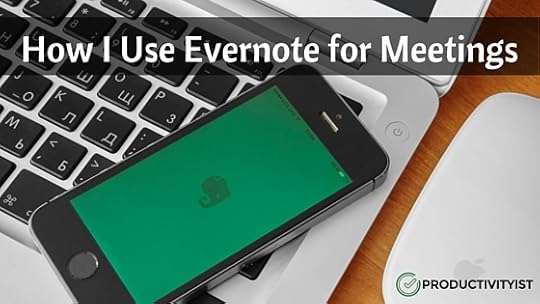How I Use Evernote for Meetings

Evernote is a big part of my workflow. I use it to hold my ideas until I’m ready to do something tangible with them. I use it in conjunction with Todoist all the time, and I even used it to build my CreativeLive course.
And I also use Evernote for meetings.
Now I know there are plenty of services out there that you can use for meeting organization. But there comes a time where you need to decide whether you want to use a service for only one thing or whether you can use something you’re already using for many things. Sure, a meeting organization tool or service is going to be useful right out of the gate without any sort of manipulation, but you still need to learn how to use it effectively. But if you’re already using Evernote (or are a user but don’t use it enough), why not modify it to serve your meeting needs?
It doesn’t have to be an all or nothing solution, either. You can use a meeting tool alongside Evernote if you want (or need) to. For example, the meeting service Do has integration with Evernote that allows meetings to be exported for easy access. Meeting minutes are exported to a notebook dedicated exclusively to Do content. (Do is free to use in its most basic iteration and you can sign up for it here.)
But you really don’t need to use a service like Do (or even LessMeeting) to use Evernote as a meeting information hub. I decided a while ago that for most of my meetings, I don’t need such a tool. In fact, my wife and I dive into Evernote every time we have the one meeting I strive to have weekly: The FFFing Meeting.
Evernote Meetings Case Study #1: The FFFing Meeting
The FFFing Meeting is one where my wife and I discuss Finance, Food, and Family. We schedule these meetings so that when we have time to spend together we aren’t sprinkling our casual conversations with important discussions revolving around these three important areas of household management.
The FFFing Meeting is also a play on words because meetings can often be a source of complaints rather than a time of constructive collaboration. But let’s just stick with the idea that the three fs stand for those areas I mentioned above, okay? 



